In this posting, we will dig into the subject of WordPress archive templates, what they are, and how to create them. On the lookout ahead, I will remind you that the archive templates are utilised mainly for almost everything on the WordPress internet site besides singles (posts, internet pages, and CPT), which implies they are critical for displaying categories, tags, posts, portfolios, and products by a individual writer, etcetera.
First, I will go around some concept and code illustrations to outline the basic principles of their hierarchy. Then, we will explore a no-code and clear-cut means of making gorgeous and flexible archive internet pages that will make your category pages, portfolios, or any other personalized taxonomies glow brilliant like a diamond.
Let’s slice to the chase.
Table of Contents
Knowing the WordPress Archive Template
Okay, first items first, why is it identified as “archive”? Are we working with old guides and manuscripts? Properly, WordPress came from the occasions when the key function of the archive template was actually to clearly show website posts in chronological order. But now, it’s easier to visualize a WordPress archive as a collection of posts grouped around a little something they all have in common and shown on the entrance conclusion. For instance, if you have a selection of posts grouped by category or tag – it’s an archive. If there are posts or portfolio merchandise by a certain creator or a bunch of posts posted on a certain day – it is an archive, also.
A WordPress archive page need to have its template to exhibit posts adequately.
Now, appear at the WordPress Template Hierarchy in the photo underneath:
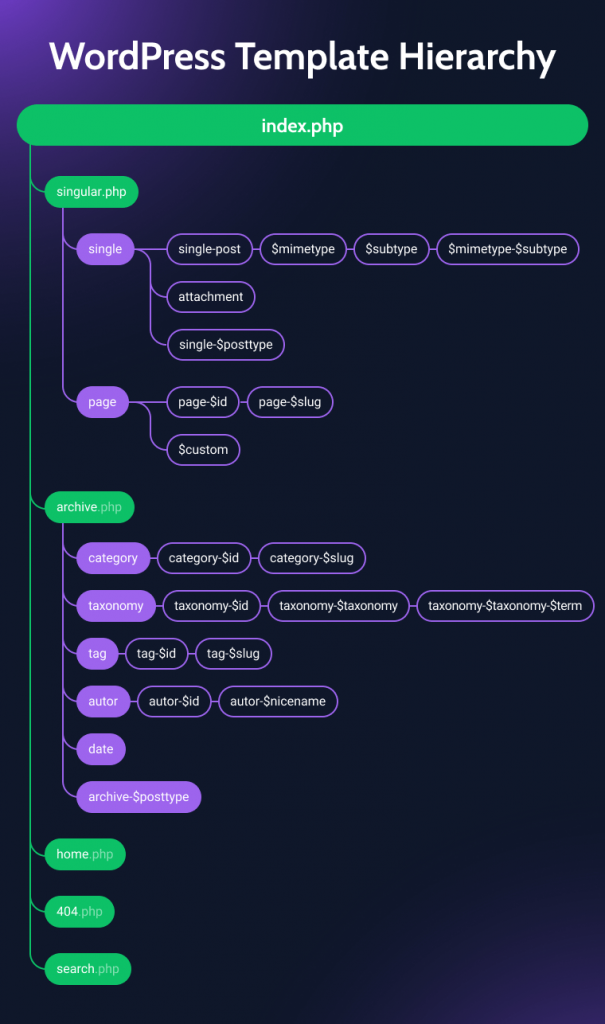
This is how all the templates perform and the logic powering their framework. The concept is basic: there is a single major template, the index.php. If no other templates existed, it would be accountable for the layouts of every single website page. But the website wouldn’t appear great if all the webpages and posts experienced just 1 template, ideal? That’s why the construction is obtaining branchy, and any concept, starting from the dawn of WordPress’s time, had two other incredibly important templates:
- one.php template responsible for the design of posts and pages
- archive.php template liable for the structure of any “collection” of posts, be it classes, tags, particular author’s posts, and so forth.
With time, WordPress developers recognized that obtaining a individual template for a property page would be amazing, so it doesn’t glance like any other webpage or put up, and themes begun to have a dedicated property.php page.
Also, pages and posts seem a great deal improved if intended in a different way, as nicely as groups and tags. That’s why they also obtained their committed templates: class.php for types, tag.php for tags, and so on – the very same with authors and customized taxonomies. If a developer would like to assign a diverse structure to a distinct class (for instance, movies and textbooks classes), they should generate and insert to their templates files named group-films.php and class-publications.php.
💡 Many thanks to the WordPress template hierarchy, a focused template can be established for each individual class, tag, personalized taxonomy, submit, page, CPT, user, and so on. But if these kinds of unique templates never exist, WordPress will use a dad or mum template from the plan above.
And, as I have previously talked about, if there are zero templates apart from for index.php, it will be made use of for everything. That is why index.php is the file with no which the concept can’t exist.
Archive template code case in point
The code down below is an example of an archive.php template from the excellent old Twenty Sixteen concept, and I’ve preferred it because it was a single of the newest formal themes with these types of a uncomplicated framework. These days, themes use information-portion a great deal, making a construction more adaptable and achieving topic adaptability in more productive approaches.
But this template is ideal for currently being employed as an instance, many thanks to its simplicity and clarity. Have a search at my responses in HTML structure () in the code to get an thought of the composition of this template:
', '' )
the_archive_description( '', '' )
?>
__( 'Previous page', 'twentysixteen' ),
'next_text' => __( 'Next page', 'twentysixteen' ),
/* translators: Hidden accessibility text. */
'before_page_number' => '',
)
)
// If no written content, include things like the "No posts uncovered" template.
else :
get_template_portion( 'template-components/content', 'none' )
endif
?>
As you can see, the structure is very easy, and for styling the watch of the posts by themselves, you will need to edit the template-areas/information.php template part. There, you can specify your material type or even position to the particular ID if expected.
It is seriously valuable for knowing the notion but time-consuming to create personalized templates by hard-coding when functioning with actual web-sites, ideal? Mainly because it is not only about writing some PHP but also a whole lot of CSS for each individual depth and then creating it responsive.
I guess only the most devoted WordPress developers have completed it this way for the very last five or 8 several years. And the reason for it is that there are a whole lot of seriously wonderful devices on the current market to do it a lot easier, speedier, and visually.
In the up coming area, we will talk about how to style and design your archive templates without touching a line of code.
Creating Personalized WordPress Archive Templates Without Coding
There are a couple strategies of planning custom archive webpages with out coding. If you like Gutenberg and Web page Editor (FSE), the themes that support it have the performance to edit these types of webpages.
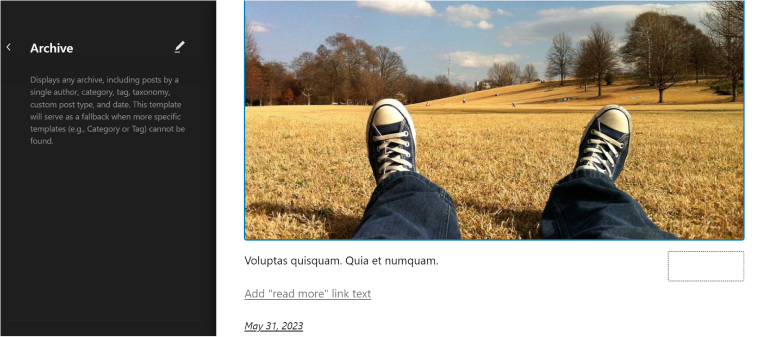
On the other hand, it is not definitely adaptable and surely desires further block plugins to make it look good.
Elementor, as the most preferred WordPress website page builder, has fairly great operation for planning templates but only in a Professional model. There, it also supplies a couple of templates you could use.
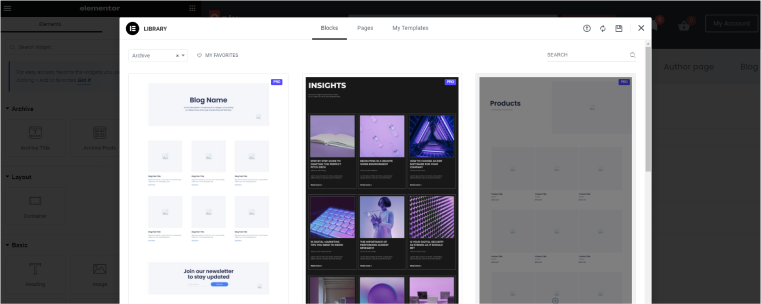
There are other visual builders that provide the features of building personalized templates, so it is up to you which just one to use. What I value when choosing this sort of resources is overall flexibility and many settings mainly because it’s really important when dealing with templates. Which is why I love the operation JetThemeCore delivers, and in the future segment, we will speak about it and how to produce archive templates applying this plugin.
How to Make a Customized WordPress Archive Template Using JetThemeCore
One particular of the superpowers of the JetThemeCore plugin is plenty of conditional options it delivers, and you can even build a template for a distinct URL parameter, machine, or user part. And, of class, you can develop layouts for One or Archive templates, the total site, headers, and footers.
You can include templates either by going to Crocoblock > Topic Builder and working with templates the way it is shown in the video or by editing a unique template in Crocoblock > Theme Templates. The big difference is that in the Concept Builder, you can see the complete photo with the headers and footers, even though in the Topic Templates, there is a listing of person templates.
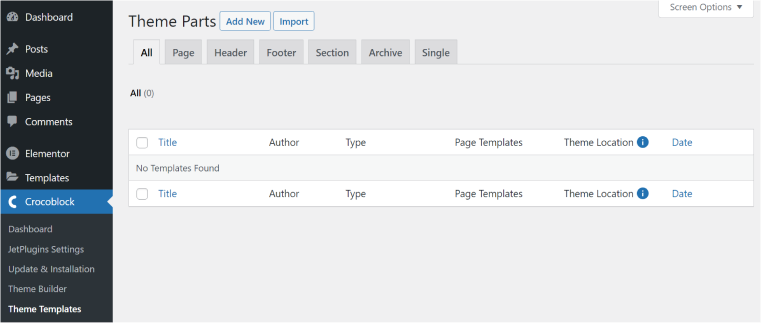
You can also decide on which editor to use for creating the template, and it can be both Elementor or Block Editor (Gutenberg). Although Elementor delivers template-making features in its Professional version, Gutenberg does not have it in non-FSE themes. Which is why, if you want to transfer your site to Gutenberg, it is a have to-have plugin, specifically if you produce custom post forms and, therefore, have to have a customized template for them.
But even with Elementor, JetThemeCore gives extra overall flexibility, and, for positive, it is incredibly handy if you use a free of charge edition of Elementor.
Building an archive template with a dynamic listing
You can create an archive template utilizing only typical Elementor or Gutenberg widgets/blocks, as properly as JetElements’ “Posts” widget. However, it would be substantially additional efficient with JetEngine here due to the fact, applying it, you can create dynamic listings and then increase them to the archive page.
Go to JetEngine > Listings > Include New, produce a listing employing JetEngine widgets/blocks or typical ones with dynamic tags, and save it. Soon after that, go to Crocoblock > Theme Templates > Include New, and employing the Listing Grid widget/block, only include the listing made in the previous step. The Listing Grid widget/block has a lot of options that get the job done wonderful for archive templates for illustration, you can established up the Load additional functionality, set a submit and column range, the heights, the grid type, or make it a slider.
But even this is not all, and in circumstance you need an archive of anything linked to time, really don’t forget that JetEngine has a Dynamic Listing Calendar module.
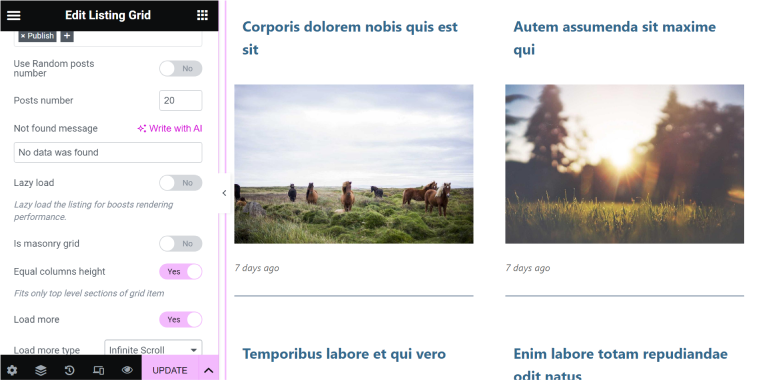
If you need a listing with elaborate sorting or assortment selections, use JetEngine > Query Builder, exactly where you can contain or exclude specific posts, sort by meta fields, set up pagination, and use numerous other options. The query you’ve developed can be utilised either as a resource for a listing or on leading of the existing listing wherever you activate the “Use Customized Query” toggle and choose that question.
Creating an archive template with filters
You may well want to add filters when applying dynamic listings for developing an archive template. And it’s really effortless with the JetSmartFilters plugin that will work with meta fields and quite a few other information elements, has loads of options to adjust filters, and gets exactly what you want for particular submit varieties to make an archive site versatile and user-welcoming.
FAQ
It is a site with a checklist of posts structured under a particular class, article type, day, writer, tag, and many others.
As the title implies, a Solitary template is accountable for person internet pages and posts, when an Archive template is for exhibiting several web pages or posts on just one website page.
You can generate these a web site both by coding it, or applying a plugin, for instance, JetThemeCore.
Wrapping Up
It’s tough to visualize a web page without the need of an archive web site since it is a ought to-have. That is why recognizing how to generate a personalized archive web page template in WordPress is important. In this article, I did my best to check out this subject from diverse angles and shared my favored and merely the very best plugins and techniques for making this kind of a template.